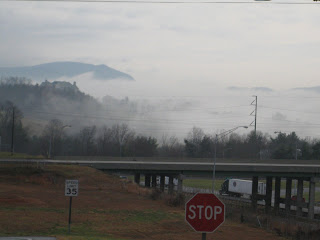Saint Augustine boasts of being the oldest permanent European settlement on the North American Continent.
Ponce de Leon claimed Florida for Spain in 1513, between then and 1563 the Spanish sent many expeditions to explore their new colony
In 1564 Fort Caroline was the first French colony in the present day United States. Established in what is now Jacksonville, FL, under the leadership of Rene Goulaine de Laudonniere it was intended as a refuge for the Huguenots. It lasted for just one year before being obliterated by the Spanish after the French had sent boats to attack the Spanish in St Augustine. They were caught in a storm and the attack failed; the Spanish then marched north and slaughtered all the French and called the place “Matanzas” Spanish for “slaughter”.
Once again it was pure luck we hit Saint Augustine on the first weekend in December - this is “the weekend” to visit Saint Augustine, we arrived Friday afternoon. The Holiday celebrations officially start Saturday morning with a Christmas Parade at 10am; we set the alarm to make sure we would not miss it - life can become very relaxed on road. Being the road warriors we now are, we checked where we could park in town on the internet and learned that we could park for 24 hours in the Civic Centre car park for $10. This proved a great decision as we were right in the center of everything and later in the day when it became chilly we returned to the car for jackets and continued our enjoyment.
The Christmas Parade was very good, there were: School Bands, Cheerleaders, Beauty Queens, an Elvis impersonator (singing Merry Christmas), Cinderella (in her crystal coach), religious themed Crib Scenes, The Grinch, Gymnasts, Kick Boxers, a Colonial British Army with their maiden followers in 17th century costumes, a Pirate Ship with a banner “How the Pirates Stole Christmas” - every so often the pirates would fire the canon at the back of the ship, finally on a fire tender - Santa Claus. It was an excellent parade for such a small town.
We then literally walked across the road to Castillo de San Marcos whose history begins on the edge of the known world. A bastion of the largest empire ever created, the Castillo was built between 1672 and 1695 to protect and defend Spain’s claims in the New World and Spanish Galleons returning with gold, silver, sugar, tobacco, chocolate and pearls from the Privateers (Pirates with a license from other kingdoms). The Castillo was built of coquina a rock/shell natural substance which is so resilient that it withstood cannonballs. Though later caught in the whirlwinds of colonial warfare and intrigue, it was never defeated in battle. Its scarred walls still stand witness to over 330 years of history and culture.
There was a 17th century British Army encampment set up on the Town Square where they drilled and answered questions, we discovered that one third of the British Army in America in the 17th century were German soldiers on loan from different Princes. This was a business deal; the Prince received a large payment, plus bonus while the soldiers were paid by the British Army.
After lunch we meandered up St George Street a pedestrian only street which is very pleasant, quite narrow and with many old Spanish buildings. Town people in period costumes walk about adding to the atmosphere as that evening an enactment of “the British are coming” is being held. In the center of town there are 3 beautiful building, all were originally hotels built by a man an oil tycoon (partner of Rockefeller in Standard Oil) called Flagler. He visited San Augustine and decided to develop the little town, built his hotels, bought the railroad and arranged for stops on its way south in Florida; this is why San Augustine is such a tourist attraction today. All three hotels surrounded a square that had a formal garden with a fountain in the center. Only one of the hotels functions as a hotel today. The most beautiful building inside or out is Flagler College - a University - the foyer and dining hall are magnificent, adorned with Tiffany glass ceilings and windows and beautifully carved staircases and pillars.
At 7.30pm we made our way for the Plaza de la Constitucion where Government House is situated and from where the parade was scheduled to start. As we sat on the wall of St. Augustine Basilica we noticed that most people had a lighted candle or lamp in their hands and were informed that the British arrested anyone out after dark that did not have a candle or lamp; we decided to take our chances on not being noticed in the huge crowd of onlookers. On the dot of eight the festivities started with a speech by the “British Governor” from the balcony of government house, not a word could be heard! On command the soldiers; British in their red and blue coats, Scottish in kilts and Germans in tall brass mitred hats marched down and then back up St George Street to the accompaniment of music played on tin whistles and drums. All followed by civilians dressed in 17th century costumes who, in turn were followed by a motley crowd of 21st century Americans.
This was a fun stop, even without all the fun we experienced this is a lovely, walkable town with lots to see and do.













